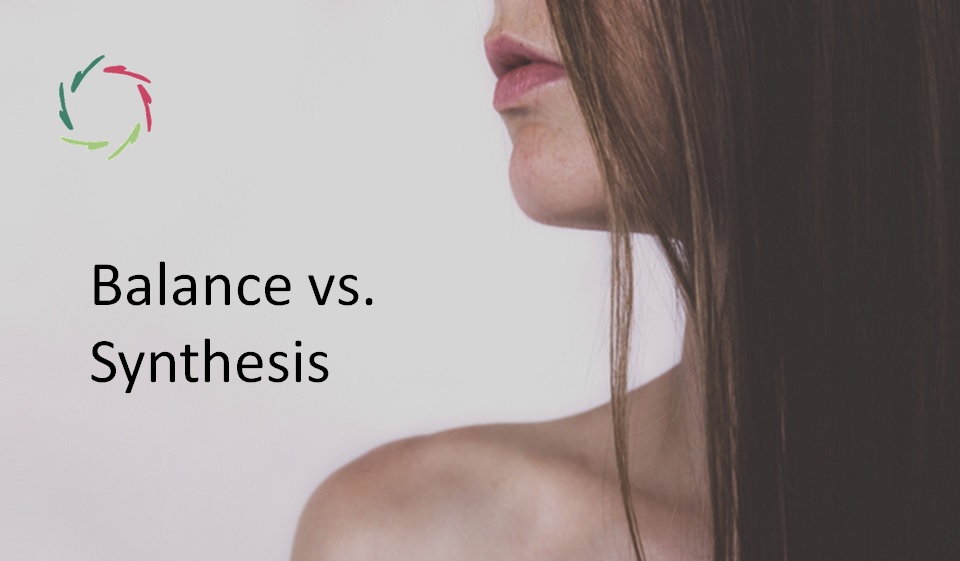Balance vs. Synthesis

Where a balancing act can be proper, a synthesis can be powerful.
In a synthesis, a deeper connection between elements is sought, which may lead to an unforeseen and original direction.
A balance is an equilibrium that doesn’t readily invite originality.
In many cases, that’s OK, of course. Finding a balance may defuse tensions, enabling parties to go forward without much in-depth ado. A proper and durable balance is frequently the best solution ― better than an extreme choice just for the sake of simplicity.
However, in many cases, the balance is not stable. A labile equilibrium doesn’t need much to lead to a renewal of the problem or the morphing into another one — keeping busy. The imbalance may even get larger in time because the root problem hasn’t been solved.
No combination
A synthesis is also more than merely a combination of things nor the combination of several distinct features of things. In a combination, one may get to a compromise ― no harm in that except when people may feel downturned or robbed of something meaningful.
A combination happens at the surface level.
A synthesis goes further/deeper.
In this, two elements or even opposing poles get together in an original way and with an original resolve to the underlying tension. A synthesis may be sought in the balancing out of things. Even so, it’s not about the simple balancing but encountering more through the act.
In politics or diplomacy, for instance, a temporary balance may be seen (and heralded in the media) as a success, but finding a synthesis may be much preferable because:
- It’s more durable.
- Striving for a synthesis invites one to look more deeply at oneself, the other, and the deeper issue(s) involved.
A synthesis may thus lead to stronger and longer-lasting ways to coexist and evolve together. In such cases, the synthesis is clearly the more Compassionate solution ― involving conceptual and subconceptual processing (say, intuition, for the sake of the argument).
Importance in coaching and mediation
A coachee may ask for a quick fix, a balancing act that leads to busyness as before. The coach’s task then involves pointing out that a synthesis may be preferable and why ― even if this is not the most straightforward task.
A G.I.M.O. is an excellent instrument to work with in this regard as an incentive to go deeper and a record of what has been done, why, and how this has been followed up.
Importance in art
A mere combination of things is not truly artful, even if it’s a new combination. True art starts with a synthesis of things, which is why it’s not an easy endeavor.
Also, that’s why an artist can feel to be growing in his art, and why new experiences can help him in that. They bring new possibilities to synthesize.
A synthesis may be genuinely transcending.
As said, it’s more than just a combination. It’s like dissolving two things to the core and creating a new one from thereon from the inside out.
This new one may have a more appropriate function for all involved. It may open up the heart of the matter. It may show why the synthesis has been needed all along. It may lead to more room for meaningfulness.
It would then be a pity just to balance things out or combine them into compromiscuity.
Openness
A true synthesis is Open ― as in Open Religion, Open Mindfulness, and Open Leadership.
A true synthesis is alive.
If push comes to shove, there is no life without it.
Life is artful.


